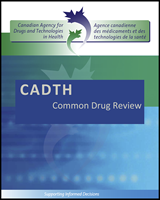Chronic thromboembolic pulmonary hypertension (CTEPH) is a disease subtype of pulmonary hypertension. It is a progressive disease characterized by the presence of non-resolving or recurrent thrombi distributed within the pulmonary arteries. This can obstruct or occlude the luminal space, eventually leading to increased pulmonary vascular resistance (PVR), pulmonary hypertension, and right-sided heart failure. Although the exact etiology of CTEPH remains poorly understood, it may arise following an initial episode of acute pulmonary embolism (PE); however, up to 60% of CTEPH patients have not had any antecedent episode of acute PE. The epidemiology of CTEPH is likewise not well established. Some surveillance data estimate CTEPH to occur in 0.1% to 0.5% of patients surviving an initial episode of acute PE; however, the true incidence of CTEPH is likely to be higher, owing to an unknown number of undetected cases either presenting occultly or latently in the setting of acute PE or through non-venous thromboembolism etiologies.
The current gold standard treatment intervention in CTEPH is surgery, specifically, pulmonary endarterectomy (PEA), which has the potential to be curative; however, there is no universally accepted criteria for operability. For patients who are not eligible for surgical intervention (up to 50%) or who refuse it, there are several classes of medical therapies indicated for pulmonary arterial hypertension (PAH) that have been used off-label as monotherapy in CTEPH patients. These include endothelin receptor antagonists (ERAs), phosphodiesterase-5 (PDE-5) inhibitors, and prostanoids (including prostacyclins and prostacyclin analogues).
Riociguat is a first-in-class drug of the soluble guanylate cyclase stimulator class of drugs, which works by producing vasorelaxation independent of the endogenous vasodilatory effects of nitrous oxide. It is also the first drug to be marketed in Canada for the treatment of CTEPH. Riociguat is initiated at a dose of 1.0 mg orally three times a day and adjusted by 0.5 mg increments every two weeks (according to systemic systolic blood pressure readings) to a maximum dose of 2.5 mg three times a day. Riociguat has a Health Canada indication for the management of inoperable CTEPH (World Health Organization [WHO] Group 4), or persistent or recurrent CTEPH after surgical treatment in adults aged ≥ 18 years with WHO functional class II or III pulmonary hypertension. Reimbursement is being sought by the manufacturer in accordance with this indication.
The objective of this systematic review was to evaluate the beneficial and harmful effects of riociguat for the treatment of patients with WHO functional class II or III CTEPH who are deemed inoperable or have persistent or recurrent CTEPH after surgical treatment.
This report was prepared by the Canadian Agency for Drugs and Technologies in Health (CADTH). Through the CADTH Common Drug Review (CDR) process, CADTH undertakes reviews of drug submissions, resubmissions, and requests for advice, and provides formulary listing recommendations to all Canadian publicly funded federal, provincial, and territorial drug plans, with the exception of Quebec.
The report contains an evidence-based clinical and/or pharmacoeconomic drug review, based on published and unpublished material, including manufacturer submissions; studies identified through independent, systematic literature searches; and patient-group submissions. In accordance with CDR Update — Issue 87, manufacturers may request that confidential information be redacted from the CDR Clinical and Pharmacoeconomic Review Reports.
The information in this report is intended to help Canadian health care decision-makers, health care professionals, health systems leaders, and policy-makers make well-informed decisions and thereby improve the quality of health care services. The information in this report should not be used as a substitute for the application of clinical judgment with respect to the care of a particular patient or other professional judgment in any decision-making process, nor is it intended to replace professional medical advice. While CADTH has taken care in the preparation of this document to ensure that its contents are accurate, complete, and up-to-date as of the date of publication, CADTH does not make any guarantee to that effect. CADTH is not responsible for the quality, currency, propriety, accuracy, or reasonableness of any statements, information, or conclusions contained in the source documentation. CADTH is not responsible for any errors or omissions or injury, loss, or damage arising from or relating to the use (or misuse) of any information, statements, or conclusions contained in or implied by the information in this document or in any of the source documentation.
This document is intended for use in the context of the Canadian health care system. Other health care systems are different; the issues and information related to the subject matter of this document may be different in other jurisdictions and, if used outside of Canada, it is at the user’s risk. This disclaimer and any questions or matters of any nature arising from or relating to the content or use (or misuse) of this document will be governed by and interpreted in accordance with the laws of the Province of Ontario and the laws of Canada applicable therein, and all proceedings shall be subject to the exclusive jurisdiction of the courts of the Province of Ontario, Canada.
CADTH takes sole responsibility for the final form and content of this document, subject to the limitations noted above. The statements and conclusions in this document are those of CADTH and not of its advisory committees and reviewers. The statements, conclusions, and views expressed herein do not necessarily represent the views of Health Canada or any Canadian provincial or territorial government. Production of this document is made possible by financial contributions from Health Canada and the governments of Alberta, British Columbia, Manitoba, New Brunswick, Newfoundland and Labrador, Northwest Territories, Nova Scotia, Nunavut, Ontario, Prince Edward Island, Saskatchewan, and Yukon.

